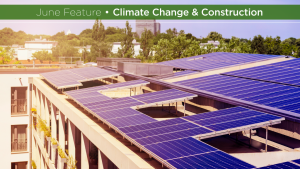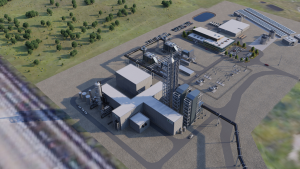How do we remove overly prescriptive, rigid development policies to achieve net-zero buildings and cities?
That was the topic of conversation during the virtual SvN Speaks 3 hosted by SvN Architects + Planners and moderated by SvN’s managing partner Drew Sinclair. The discussion focused on the City of Toronto and the surrounding region.
Author and journalist John Lorinc said the city needs to rethink how it’s going to meet its population targets over the next 20 or 30 years and the way development will take place to accommodate growth.
“I think that we need to really begin to think about different approaches to adding density that is more sustainable, that allows for the use of less carbon intensive building materials and creates a more sustainable approach to intensification as opposed to the tall and sprawl approach,” Lorinc explained.
Real estate developer Brandon Donnelly said if you look at the City of Toronto, generally speaking there are dense pockets in specific locations and mostly low rise around it.
“If we were to ask ourselves if our only goal was sustainability and reduce carbon emissions and focus on climate emissions, would we build a city this way? I think the answer would be no,” said Donnelly. “We need less spikiness. We need to increase the density…in the other parts of the city, broadly bring up that minimum density and create more transit supportive density all around the region.”
The speakers were asked which land use designation in the current official plan presents the most challenging impediment to meeting objectives outlined in the Transform TO strategy to reduce greenhouse gas (GHG) emissions to net-zero by 2040.
Donnelly said buildings and transportation are responsible for much of those emissions.
“The transportation side is actually really challenging in my opinion to solve because the network that we have created in many parts of the city and the region is really not supportive of transit,” said Donnelly.“It’s mostly car-oriented and how do you get away from that and create the right kind of densities and the right kind of environment where people can get around with other types of mobility.”
He also said there is a need to modernize how the city thinks of employment areas.
“We have a site in the GTA on transit that is mired in this labyrinthian kind of web of employment land policies,” said Donnelly.
“We’ve been trying to build housing on transit for almost seven years now and by the time we actually get shovels in the ground I bet it’ll be close to a decade. That, to me, is a problem. I think everyone acknowledges ‘hey we should have housing on transit, we should have a mix of uses,’ but the reality is we’re getting stuck in so many ways where we can’t deliver on that.”
In order to move away from forms of urban development that are carbon intensive, policy transformation is required.
“We have a governance system in the City of Toronto which hugely gives preference to the owners of single family homes and dwellings. That is a monumental obstacle to allowing the City of Toronto to move beyond arrested adolescence into a more adequately dense kind of urban form which exists in many cities around the world,” said Lorinc, adding one of the fundamental problems is the way the City of Toronto is governed and the power council has over development and zoning.
Donnelly agreed, adding it’s a problem that translates into even modest mid-rise buildings taking too long to get through the entitlement process.
“What’s happening, and I think this is being exacerbated by the cost environment that we’re in too, but as costs keep going up there is this cost floor that’s going up as well,” said Donnelly.
“That’s pushing developers into wanting to do bigger and bigger projects because you’re trying to find economies of scale. If it’s going to take you three years, or in some cases seven years, to get something entitled you’re going to want to do the biggest project that you can possibly do.”
In terms of dealing with housing affordability and supply, Donnelly and Lorinc said different approaches like modular construction need to be considered.
Follow the author on Twitter @DCN_Angela.











Recent Comments